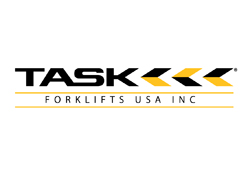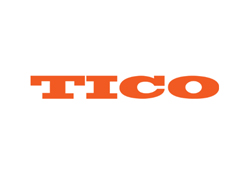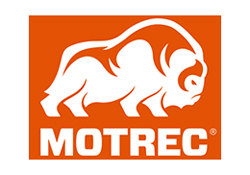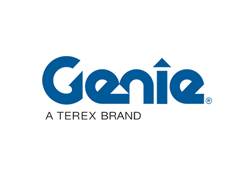How to Choose the Best RFID Bluetooth Reader for Your Business Needs with Industry Insights and Data Analysis
In today's fast-paced business environment, the need for efficient and reliable data tracking solutions has never been greater. One of the most powerful tools at your disposal is the RFID Bluetooth reader, which offers advanced technology for managing inventory, enhancing security, and streamlining operations. Choosing the right RFID Bluetooth reader for your specific business needs can significantly impact your overall productivity and efficiency, making it essential to understand the various types and features available in the market.
The growing adoption of RFID technology across diverse industries highlights the necessity for companies to stay ahead of the curve. With numerous options on the market, it's crucial for businesses to conduct thorough industry insights and data analysis to identify the best RFID Bluetooth reader that aligns with their operational requirements. From retail to logistics, understanding the unique advantages and limitations of each reader type will enable organizations to make informed decisions that can lead to optimized processes and cost savings.
This article aims to guide businesses through the selection process, examining key factors such as compatibility, range, battery life, and data management capabilities. By leveraging strategic insights and empirical data, businesses can ensure they choose an RFID Bluetooth reader that not only meets their immediate needs but also supports future growth and scalability.
Understanding RFID and Bluetooth Technology: Key Differences and Applications
RFID (Radio Frequency Identification) and Bluetooth technology are both instrumental in streamlining business operations, yet they serve different purposes and are suited for various applications. RFID utilizes electromagnetic fields to automatically identify and track tags attached to objects, offering advantages in environments requiring high-speed data capture and a large volume of items—such as warehouses and inventory management systems. Its ability to read multiple tags simultaneously without a direct line of sight makes it invaluable for enhancing operational efficiency.
In contrast, Bluetooth technology enables short-range wireless communication between devices. It is often employed in scenarios requiring low power consumption and simple point-to-point interactions, such as personal devices, mobile payments, and smart access control systems.
Understanding these key differences is essential for businesses looking to adopt the right technology. As organizations analyze their specific needs—considering factors like distance, data throughput, and the types of items being monitored—they can make informed decisions on whether RFID, Bluetooth, or a combination of both is the best fit for their operational goals.
Assessing Your Business Needs: Factors to Consider When Selecting a Reader
When selecting the best RFID Bluetooth reader for your business needs, it is crucial to assess various factors that can significantly impact your operations. According to industry insights, key considerations include cost, ease of use, and scalability. A recent market analysis indicates that transparent pricing structures, encompassing both initial investments and long-term operational costs, can greatly influence purchasing decisions. Businesses should ensure that the reader's interface is intuitive enough for new employees to master within five minutes. This ease of integration is vital in reducing training costs and enhancing overall efficiency.
Additionally, scalability is a significant factor to consider, especially in the context of retail expansion. As businesses grow, their technological needs evolve. A report from a leading market research firm emphasizes that companies must choose RFID readers that can seamlessly integrate with expanding infrastructures without requiring major overhauls. Insufficient scalability can lead to operational bottlenecks and increased expenditures. In navigating this landscape, organizations must focus not just on current requirements but also on future needs, ensuring that selected solutions are adaptable and future-proof.
Industry Insights: Current Trends in RFID and Bluetooth Reader Technologies
The current landscape of RFID and Bluetooth reader technologies is characterized by rapid innovation and increasing integration into various industries. The shift towards automation and real-time data tracking has led businesses to adopt these technologies more aggressively. In retail, for instance, RFID is enhancing inventory management by providing accurate, real-time insights into stock levels, thus improving efficiency and reducing costs. Concurrently, Bluetooth Low Energy (BLE) is seeing significant adoption in applications such as asset tracking and location-based services, driven by its ability to consume less power while delivering reliable connectivity.
Moreover, the convergence of RFID and Bluetooth technologies is creating a new wave of hybrid solutions that leverage the strengths of both. These integrated systems enable businesses to gain deeper insights into operational processes and customer interactions. For instance, a combined RFID-Bluetooth system can streamline supply chain operations while providing seamless user experiences in smart environments. As industries continue to explore these advancements, businesses must stay informed about emerging trends and data analysis to make strategic decisions regarding the implementation of RFID and Bluetooth readers tailored to their specific needs.
Data Analysis: Evaluating Performance Metrics and ROI of Readers
When selecting an RFID Bluetooth reader for your business, evaluating performance metrics and return on investment (ROI) is crucial. Industry reports indicate that top-performing RFID readers can enhance operational efficiency by up to 30%, significantly reducing the time taken for inventory management. A study by Grand View Research highlights that the global RFID market is expected to reach $40 billion by 2027, driven primarily by the increased adoption of RFID technology in various industries, including retail and logistics. This rapid growth underscores the necessity for businesses to invest in reliable and efficient RFID readers that can deliver measurable performance improvements.
In addition to efficiency gains, you must consider the ROI of RFID readers. According to a research report from Zebra Technologies, companies utilizing RFID technology reported an average ROI of around 12% within the first year of implementation. Factors influencing ROI include the reduction of stock discrepancies and improved customer satisfaction, as real-time data allows businesses to make informed decisions. By meticulously analyzing these performance metrics and their impact on profitability, companies can choose RFID Bluetooth readers that align with their specific business needs and maximize their investment.
Top Models Reviewed: A Comparison of Leading RFID Bluetooth Readers on the Market
When selecting an RFID Bluetooth reader, understanding the competitive landscape is key. Recent market analysis highlights that the RFID market is projected to reach $14 billion by 2028, with a compound annual growth rate (CAGR) of 9.4% from 2021. This growth is driven by various industries increasingly adopting RFID technology to streamline operations. Leading models on the market, such as Zebra's ZD620 and Impinj xArray, have been critically reviewed for their performance and features, showcasing their effectiveness in inventory management and asset tracking.
A detailed comparison of these top models reveals critical insights into usability, range, and integration capabilities. For example, Zebra's ZD620 offers advanced printing features alongside robust connectivity options, making it ideal for retail environments. Meanwhile, Impinj xArray's ability to read multiple tags simultaneously enhances its efficiency in large-scale operations, supported by a recent report from ABI Research, which notes that RFID systems can improve accuracy by up to 99% compared to traditional barcode systems. As businesses navigate the selection process, leveraging these insights will ensure they choose a reader tailored to their specific needs.











